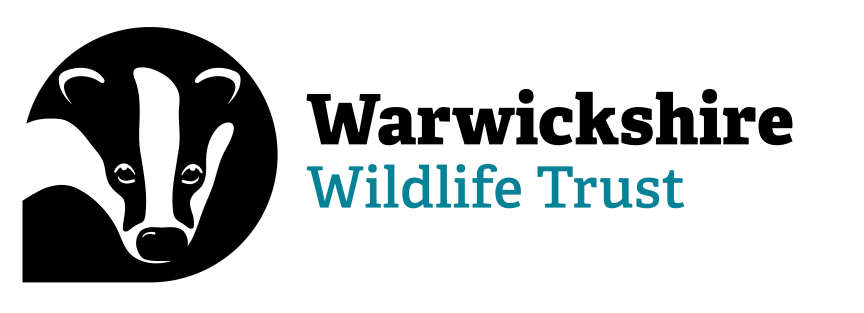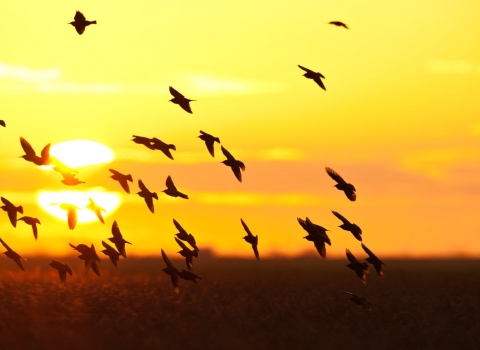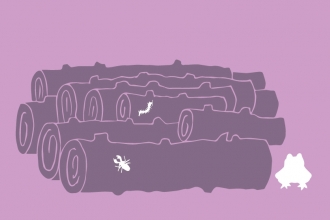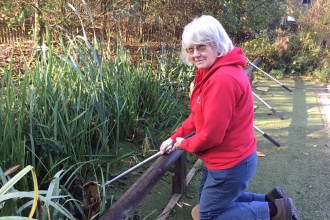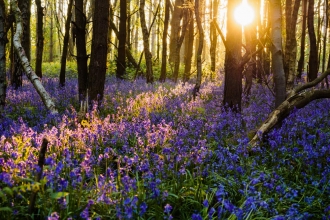Human-induced climate change has the potential to put all species (including humans) on our planet at risk. The scientific world almost unanimously agrees that human activity is playing a major role in global temperature rise and if left unchecked this could contribute to the next global mass extinction, the likes of which have not been witnessed on earth since the dinosaurs.
The world is already 1°C warmer than pre-industrial levels and we are experiencing the impacts, from extreme weather to rising sea levels and diminishing arctic sea ice. Without urgent action, global warming is likely to reach 1.5 °C by as soon as 2030. Exceeding this threshold by even half a degree will significantly increase the risk of drought, flood, wildfires, food shortages and poverty for hundreds of millions of people. These extremes will also accelerate biodiversity loss and species extinctions. If the world keeps on warming, we could see catastrophic climate breakdown.
Why are we facing a climate and ecological emergency?
The earth’s climate has always experienced changes over time, but assessments by scientists show that it is extremely likely that human activity is warming our planet at a much faster rate than ever before.
Human use of fossil fuels – coal, oil and natural gas – releases carbon dioxide and other greenhouse gasses into the atmosphere. These gasses trap heat from the sun and warm the planet, causing ice caps to melt and sea levels to rise.
This process has been made worse by other human activities, like deforestation and the degradation of our peatlands and seas. These natural habitats play vital roles in absorbing carbon and regulating our climate. A reduction in woodland and peatland habitats means that less carbon is absorbed from the atmosphere. In addition if wood and peat and burnt then they further carbon is released.
Scientists believe that there are ‘tipping points’ as global temperatures increase. At these crucial points the impacts of climate change become irreversible. Polar ice, for example, plays a role in helping to regulate global temperatures. If polar ice were all to melt completely then it would no longer perform that function and further global temperature increases would occur as a result.
Let Nature Help
The Wildlife Trusts published a report in June 2020 ‘Let nature help – how nature’s recovery is essential for tackling the climate crisis’. Drawing on the latest research, the report shows how a variety of natural landscapes in the UK can store carbon and could absorb a third of UK emissions if these degraded habitats were to be expertly restored. It makes the case for addressing the climate and nature emergencies together, head on.
Read ‘Let nature help – how nature’s recovery is essential for tackling the climate crisis’
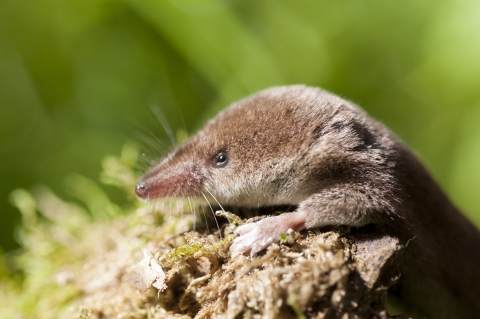
Steven Cheshire
How will climate change affect local wildlife?
Weather
Scientists agree that climate change is not responsible for daily weather. However, climate change does increase the likelihood of extreme weather events (droughts, floods, heavy snow, storms, etc.). So for example an area which currently floods 1 in 100 years might flood more regularly, potentially 1 in 10 years. These extreme weather events are another factor that challenges our native wildlife. For species that are already facing challenges with habitat loss and fragmentation, predation or conflict with non-native wildlife and human induced pollution, this could be the final factor that drives them to extinction.
Climate change is a global issue, but already the effects are being felt close to home. In 2019 the UK experienced its hottest week on record, and the 10 hottest years on record have all been since 2002. Rising sea levels are also likely to cause increasingly frequent storms and extreme rainfall events.
It is likely that some, possibly many, species will find it hard to adapt to a changing climate and to the more frequent extreme weather events that climate change will bring. Most species of plant, insect and animal are adapted to thrive in specific habitats and under specific environmental conditions. As climate change causes major variation in these conditions, these species and those that depend on them for food, pollination or shelter are likely to struggle to survive.
Animals at risk
A 1 degree temperature rise for humans is a barely noticeable difference, but for some animals this means life or death. Among the most at risk are badgers, water voles, soprano pipistrelle bats and dormice, and the climate can become less suitable for so many other species. Common shrews, great crested newts and even grey squirrels in Warwickshire will be left right on the edge of their suitable climate area; meaning that any further increases in temperature could push them out of the county too. This is because these species rely on food that is more susceptible to the impact of climate change and the pace at which that food source will decline or even become extinct will leave animals like soprano pipistrelle bats with few alternatives.
Impacts on insects
As a group, insects are also particularly sensitive. From pollination to breaking down detritus and from food sources to pest control, insects are vital to maintaining healthy ecosystems. Even when warming is limited to 1.5°C above pre-industrial levels, 25% of Warwickshire’s insects may be lost from the area. Among the worst affected insects are mayflies and stoneflies; both of which are important food sources for fish. As insects are the base of the food chain, a decline in their numbers has the potential to impact pretty much every species on the planet.
The importance to people and local impacts
Why is this important to people?
Aside from the obvious benefits that a healthy natural world provides for our mental and physical wellbeing, we also rely on it for food. One in three mouthfuls of food we eat are produced as a result of pollination by insects like bees. If, as a result of climate change the population of pollinating insects crashes or they become extinct it will be harder for us to grow food without further human intervention. This would lead to increase food costs and the likelihood of more processed food which has been linked to poor diet. In addition if climate change leads to more extreme weather events happening more frequently there will be increased disruption to our daily lives which increase the cost to people and businesses. Insurance costs would increase due to the increase in damage caused by extreme weather and we can expect to see transport and communication disruption more regularly than before. So even if you don’t care about wildlife you should care about the impact of the climate and ecological crisis we are facing as it will impact on you.
What impact is climate change going to have on our nature reserves?
Lots of different factors influence the condition of our nature reserves. The impact of climate change on specific nature reserves is also hard to quantify, because there may be some short-term ‘gains’ for certain species and losses for others.
Our nature reserves are likely to remain good places for wildlife to thrive. This is because they are actively managed for wildlife, to create genetically diverse and species-rich habitats which are known to be more resilient to climate change impacts.
However, on their own nature reserves are islands across Warwickshire, Coventry and Solihull. Whilst our nature reserves are managed to be as resilient as possible, climate change has the potential to change wildlife distribution, damage habitats and throw life cycles out of sync. This means that our nature reserves are more at risk from extreme weather events that could compound those issues and result in local extinctions.
The most effective way to make our nature reserves more resilient is to create bigger, better, more joined up areas that enable wildlife to adapt to changing conditions wherever possible. We are working collaboratively to create a ‘nature recovery network’ that will map and then implement the enhancement of wild places for the benefit of wildlife and people.
Some broad trends we could see include:
Changes in wildlife distribution
As global temperatures increase across the globe, the temperatures in the UK will be more like the current central/southern Europe temperatures. In those regions the increase in temperature may lead them to being more like African temperatures. We will likely see species moving northwards to try and remain within their existing climate conditions. Researchers from Durham University and the RSPB estimate that European breeding birds will move north by an average of 300 miles. These changes in distribution could have knock-on consequences as species compete for food and shelter.
Damage to habitats
Our native wildlife has taken hundreds, and in some cases thousands of years to adapt to the conditions here. One of the threats of climate change is the pace at which the conditions may change. For some species the change may be too rapid for them to adjust their feeding strategy or nesting time. Wetland birds like redshank and curlew, for example, could decline in number as saltmarshes become inundated with floodwater and wet grasslands dry up during hot summers.
Lifecycles becoming out of sync
All species (even humans) rely on other species to exist. Another challenge of climate change is the impact on one species can result in a knock on impact to many others that rely on it. Think of the natural world as a giant game of jenga. Each piece in the tower is a different species. If one or two species die out they risk bringing the whole stack tumbling down because of the way in which wildlife interacts. Changes to the lifecycle of one species can knock another out of balance. For example, blue tit chicks need around 100 caterpillars every day, but if butterflies emerge earlier due to warming temperatures, there may not be enough caterpillars around at the right time for the blue tit chicks to thrive. As this effect ripples through the food web, it could have serious consequences for wildlife.
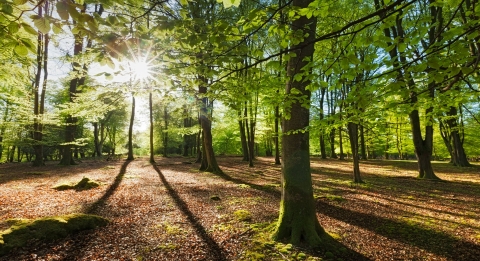
Beech woodland. Guy Edwardes/2020VISION
What role does WkWT play in limiting the damage done by the climate and ecological crisis?
If we are to prevent or minimise the impact of climate change we need to work with the natural world to find solutions. Woodlands can store carbon, floodplains can protect urban areas from flooding and more resilient habitats for wildlife will help to maintain the balance of ecoystems should changes continue to occur.
To meet the challenge of climate change, we need resilient, abundant, and biodiverse ecosystems across Warwickshire, Coventry and Solihull.
Warwickshire Wildlife Trust is working hard at a local level to
- Make our nature reserves the best they can be for wildlife and resilient to future climate change.
- Influence other landowners like farmers and councils to make space for nature and create bigger, better, more joined up areas for the benefit of wildlife and people.
- Support local communities to make a difference on their doorstep. Encouraging behavioural change and providing guidance on how everyone can do their bit to reduce their carbon footprint and make space for nature.
- Championing and pioneering the use of the natural world (e.g. natural flood management) to help provide the solution to some of these challenges.
- Educating school children (and adults) about how interconnected our world is, and how reliant humans are on the other species that share our planet.
- Lobbying Government and influencing planning and development to try and create a more sustainable future where agricultural, housing and infrastructure policy is designed with wildlife in mind to minimise or even positively contribute towards the climate crisis. Calling for an ecological network to secure nature’s recovery – with our Wilder Future campaign we are asking for a strong and robust Environment Act that would legislate for a Nature Recovery Network and set ambitious targets for resilient ecosystems.
What actions can I take as an individual to reduce my environmental impact?
- Be inspired to take action! If everyone takes small steps, together we can make a huge difference!
- Volunteer with Warwickshire Wildlife Trust to help manage our nature reserves, educate children or inspire others to change their behaviours.
- Join us as a member to help support our vital work.
Be part of our Wilder Future for Warwickshire project!
Read the latest State of Nature report
We are grateful to Dr Rhosanna Jenkins whose research has helped inform the impact of climate change on Warwickshire’s wildlife.
The Wildlife Trusts are a partner in the national coalition of charities 'Crack the Crises', find out more here.
